Grand Canal has seen Jiangsu’s Qingmingqiao become a key industrial hub in the past and tourist hot spot now
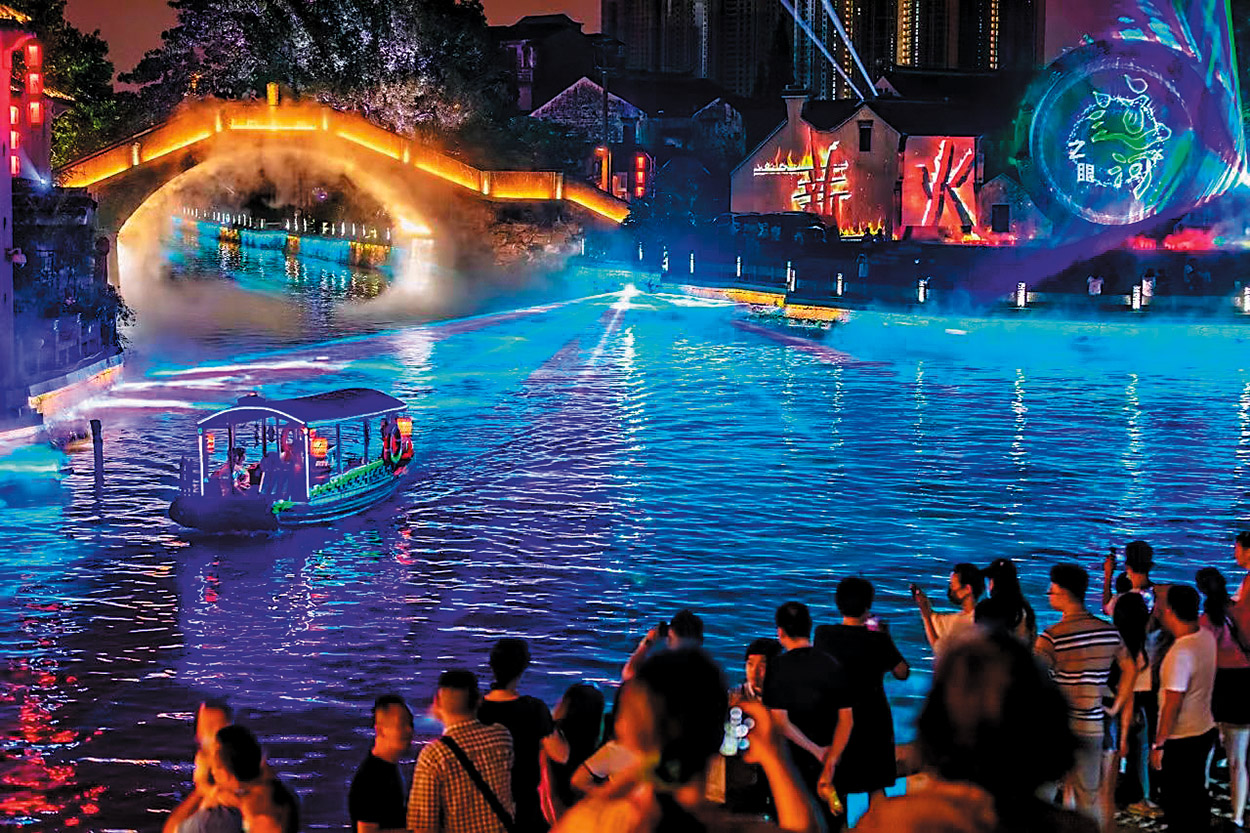
Every week, Feng Qiuxia and her husband visit her 88-year-old mother, who lives in Qingmingqiao, a historical block along the ancient Grand Canal in Wuxi, Jiangsu province. Together, they enjoy solace by the tranquil pier near the Wuxi Kiln Site Museum, where they watch the gentle flow of the river and the bustle of passersby.
Feng’s mother earned her living firing kilns in her youth and she continues to call this historical haven home. Feng’s grandfather also used to make bricks in kilns along this riverbank.
“Life is much easier now, with better infrastructure and facilities,” Feng said.
Wuxi has a long history of pottery making and many kiln workers’ descendants still live in this area. While they have switched livelihoods, such as opening guesthouses or restaurants, they maintain strong ties to this neighborhood.
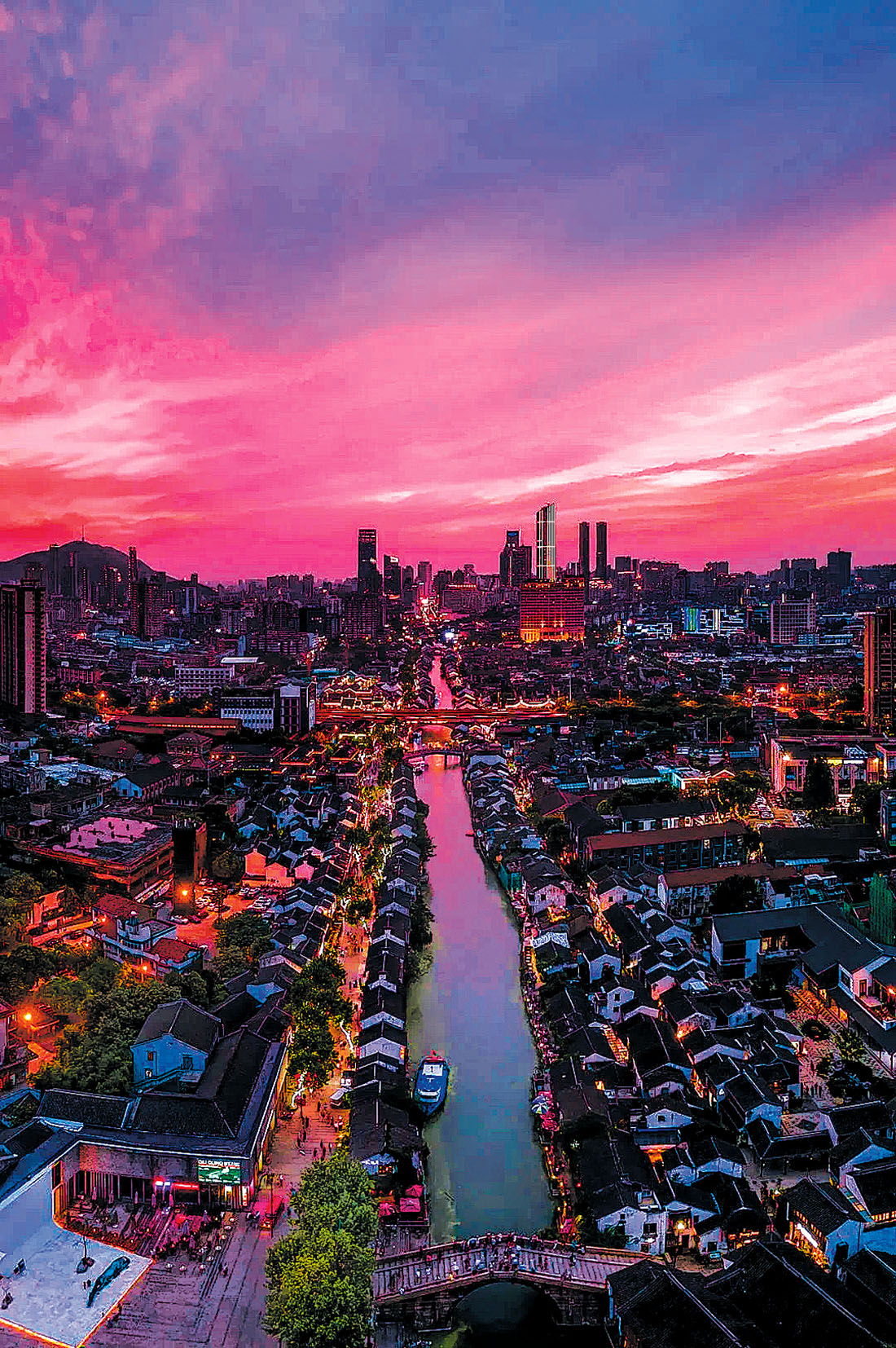
The Qingmingqiao historical and cultural district sits where the ancient Grand Canal meets Bodu port. Its roads and waterways still retain the charm of Jiangnan, a region located around the lower reaches of the Yangtze River, with its quaint bridges and riverside homes.
In recent years, Wuxi’s government has worked to preserve and repurpose key cultural sites and traditional homes alongside the ancient canal.
The district is employing its century-long legacy of industry and commerce to develop new attractions, including the kiln site museum, the former residence of Qing Dynasty (1644-1911) entrepreneur Zhu Dachun and the Maoxing Flour Mill.
By connecting these sites and showcasing special exhibitions along the canal, the district highlights its diverse cultural heritage, including canal life, industrial and commercial activities, and the unique lifestyles of water towns.
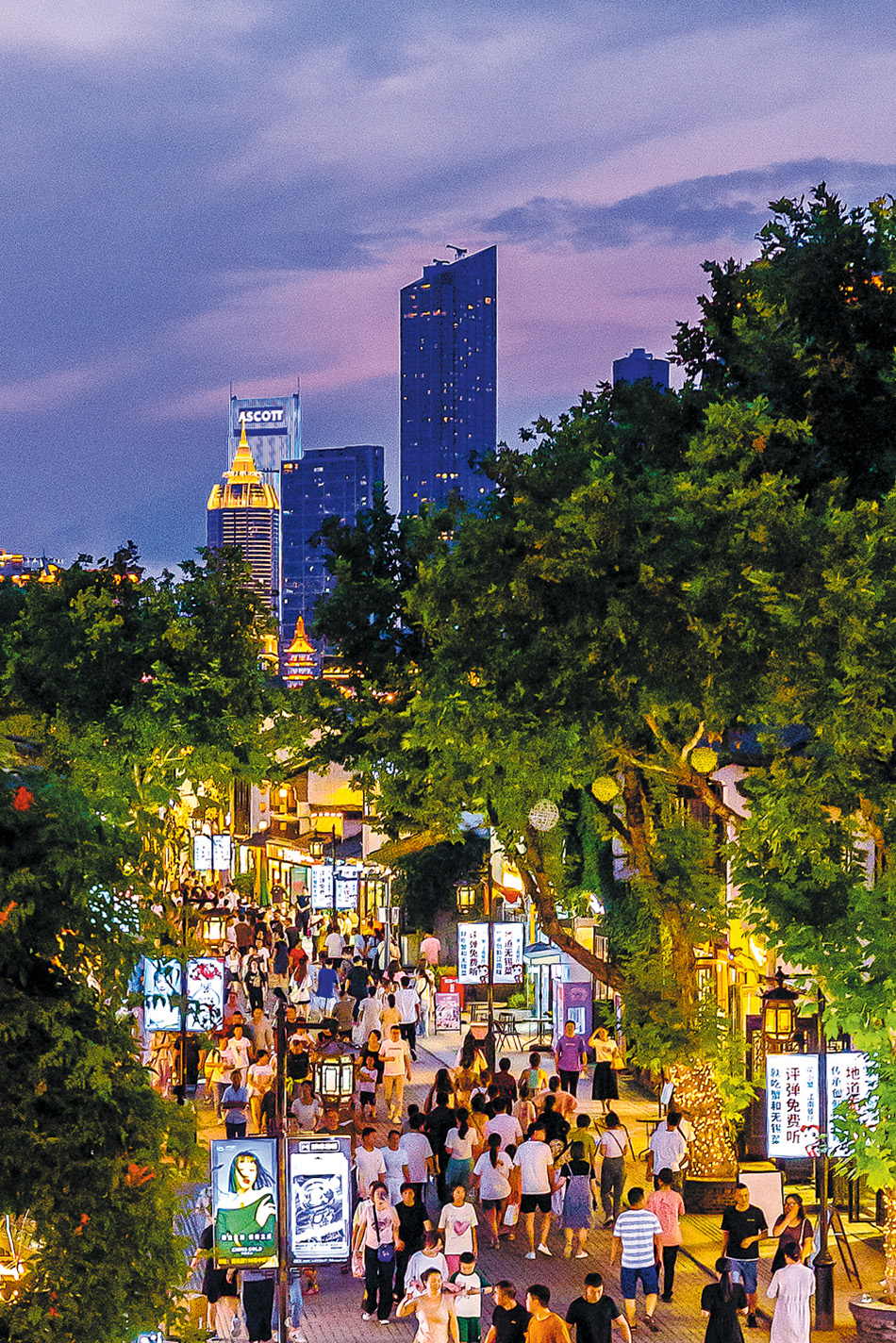
Today, the area retains its original charm, with old residences, shops, and historical sites coexisting harmoniously. Along the canal, visitors can find restaurants, cozy bookstores and engaging museums, creating an immersive “living museum” of the Grand Canal.
During the day, the streets buzz with residents picking vegetables and fixing shoes by the waterway, generating a quaint, rural vibe. Come nightfall, the area transforms with bustling eateries and lively entertainment, such as the Eyes on the Canal light show.
This bustling nightlife attracts tourists and locals alike. With over 300 businesses, the area welcomes nearly 30 million visitors annually. During the recent May Day holiday, it was particularly busy, receiving 380,000 visitors on May 1 alone.
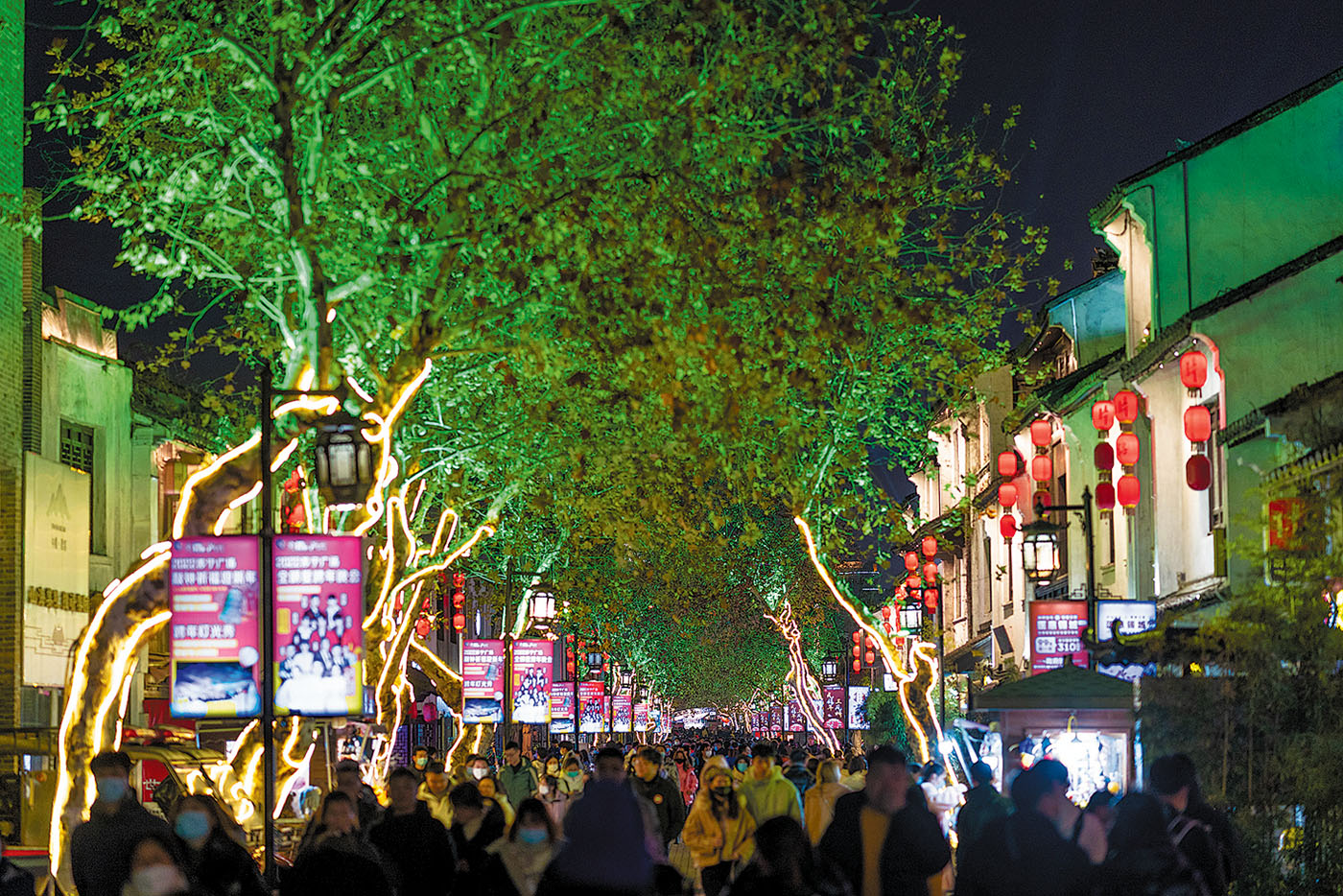
Of the 18 cities the Beijing-Hangzhou Grand Canal passes through, Wuxi is the only one where it flows through the urban area.
Historically, pottery making thrived there, with more than 400 kilns lining 1.5 kilometers of the ancient canal.
Wuxi’s bricks were not just local treasures — they journeyed across the nation along the canal. Portions of the bricks for Nanjing’s city wall in the Ming Dynasty (1368-1644) and the golden bricks for Beijing’s Forbidden City originate from Wuxi.
“I once vividly imagined the night scenes in ancient times, with more than 400 kilns glowing red along both sides of the waterway. It seemed like the sky was painted red in the distance. It was truly a breathtaking sight,” said Ruan Xiqing, a local writer and chairman of the Liangxi District Writers Association in Wuxi.
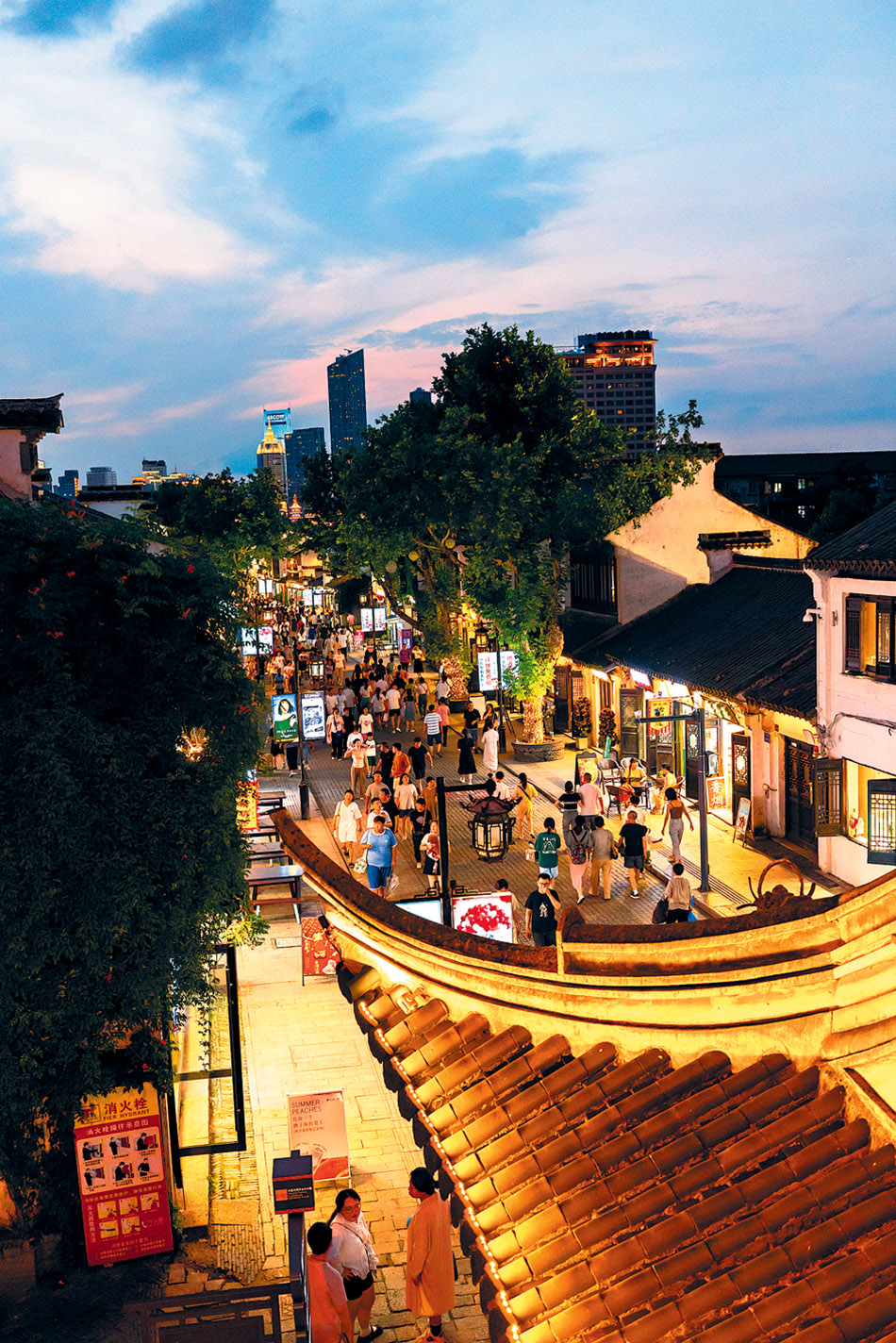
The pottery industry declined with the shift from water to land transportation. Today, there remain the ruins of nearly 50 kilns along the canal, including 19 well-preserved ones on Dayao Road by the waterway.
The Wuxi Kiln Site Museum offers insights into the area’s rich heritage of brick and pottery making. Visitors can see various types of bricks and tiles, and learn about the firing processes through exhibits and models.
Despite the industry’s decline, over 3,000 descendants of kiln workers still live in the Qingmingqiao area. They have actively contributed to the museum’s establishment by donating materials and serving as volunteer guides.
“The museum is a valuable tourist attraction where visitors can witness the 600-year evolution of China’s brick kiln culture,” explained Ruan. For him, it holds childhood memories.
“We used to play hide-and-seek in those kilns.”
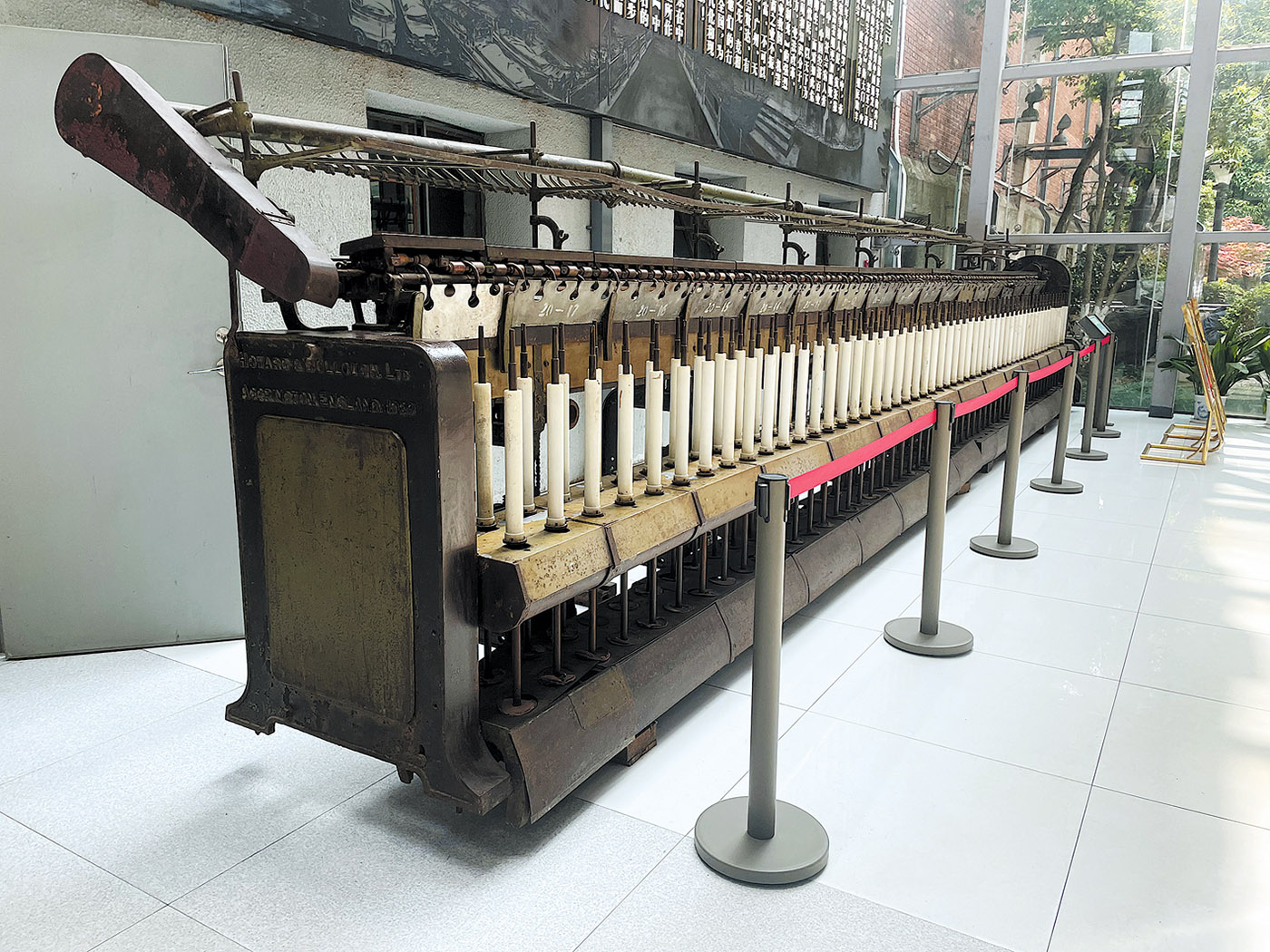
The local government has found other ways to breathe new life into these ancient kilns, such as family study tours.
“I think it’s wonderful for children to learn about the area’s history through such experiences,” Ruan said.
Many of Ruan’s literary works revolve around the Grand Canal and Dayao Road. He describes how the soil on this street, after centuries of firing, has nurtured lush trees and fragrant flowers on the old kiln roofs.
“While walls in Jiangnan are typically white, on our street, the kiln firing keeps the smoke and dust low, often settling on windowsills and walls. So, many households have opted to paint their walls black,” Ruan explained.
“Before the neighborhood’s transformation, it was just a mundane part of our lives. We didn’t realize its cultural value. Now, even after the makeover, it remains an open neighborhood, but it has given us a fresh perspective on our lives.”

Over centuries, the Grand Canal witnessed bustling docks for rice, cloth, and silk, alongside the birth of commercial giants.
The Maoxing Flour Mill stands along the waterway. Established in 1900 by prominent Chinese entrepreneurs Rong Zongjing and Rong Desheng, it marked the beginning of domestic capital enterprises in China.
It is now the Wuxi Chinese National Industry and Commerce Museum. Here, visitors can explore the local development of industry and commerce, with exhibits showcasing the complete production process of the flour industry, including preserved wheat warehouses, milling workshops, and flour depots.
Wen Yan, director of the special exhibition department at the Wuxi Museum, explained: “The museum’s building is itself a historical structure. We use scientific methods to analyze damage and corrosion to the wall’s bricks. Even during repairs, the entire process is scientifically validated.”
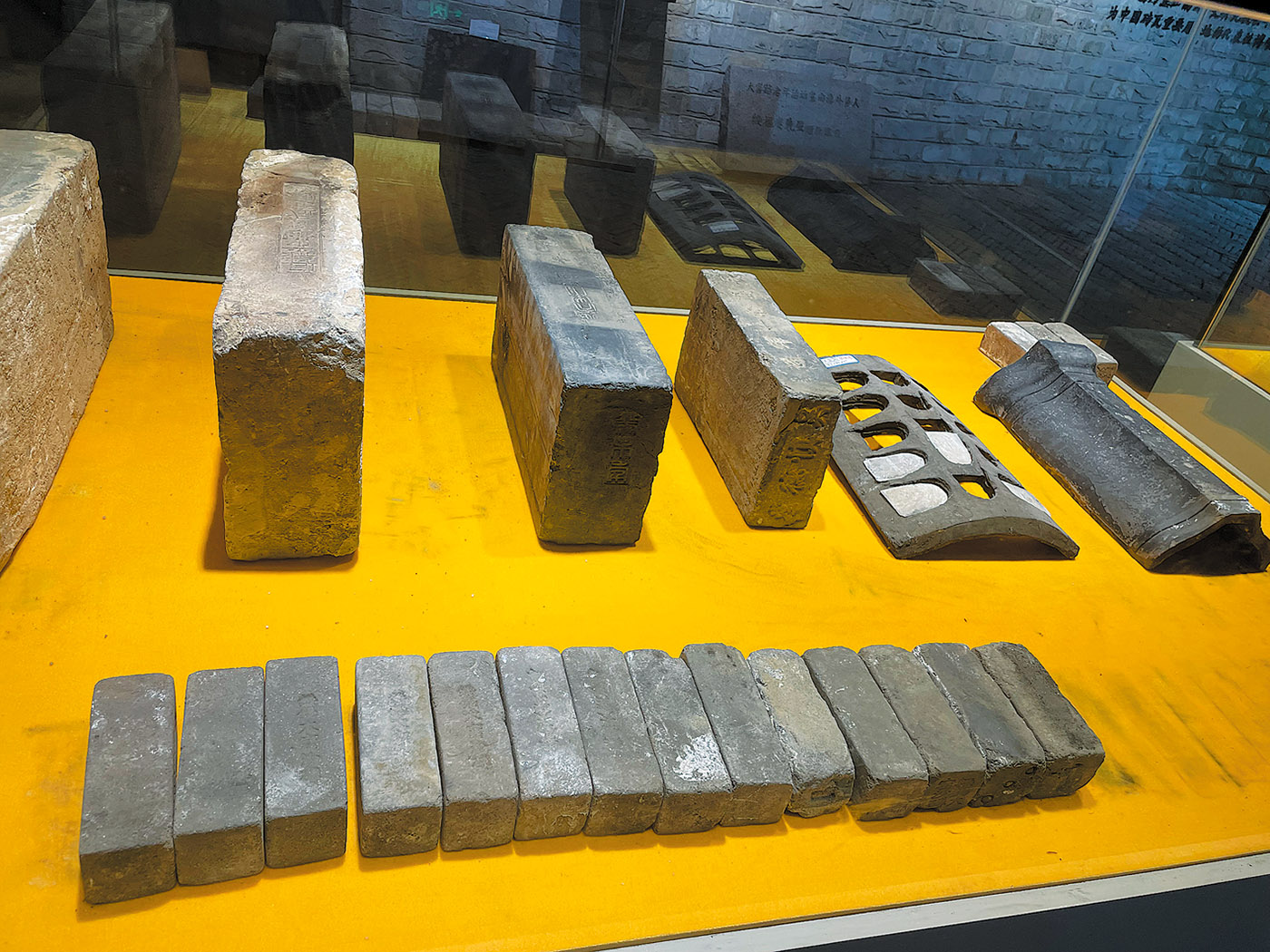
They have also been experimenting with various innovative approaches over the past two years to make cultural relics more engaging for younger visitors. For instance, they have partnered with theater troupes to stage plays like The Youth of a Giant and organized activities like murder-mystery games.
Wen said that Wuxi’s evolution from a modest county town to a bustling modern commercial center is due to its vibrant industrial and commercial legacy. Many businesses along the canal, including the flour mill, silk factory, and cotton mill, owe their existence and prosperity to this past.
“The industrial heritage sites feature unique architecture. They’re often designed by renowned architects and blend history with a vibrant cultural atmosphere,” Wen said.
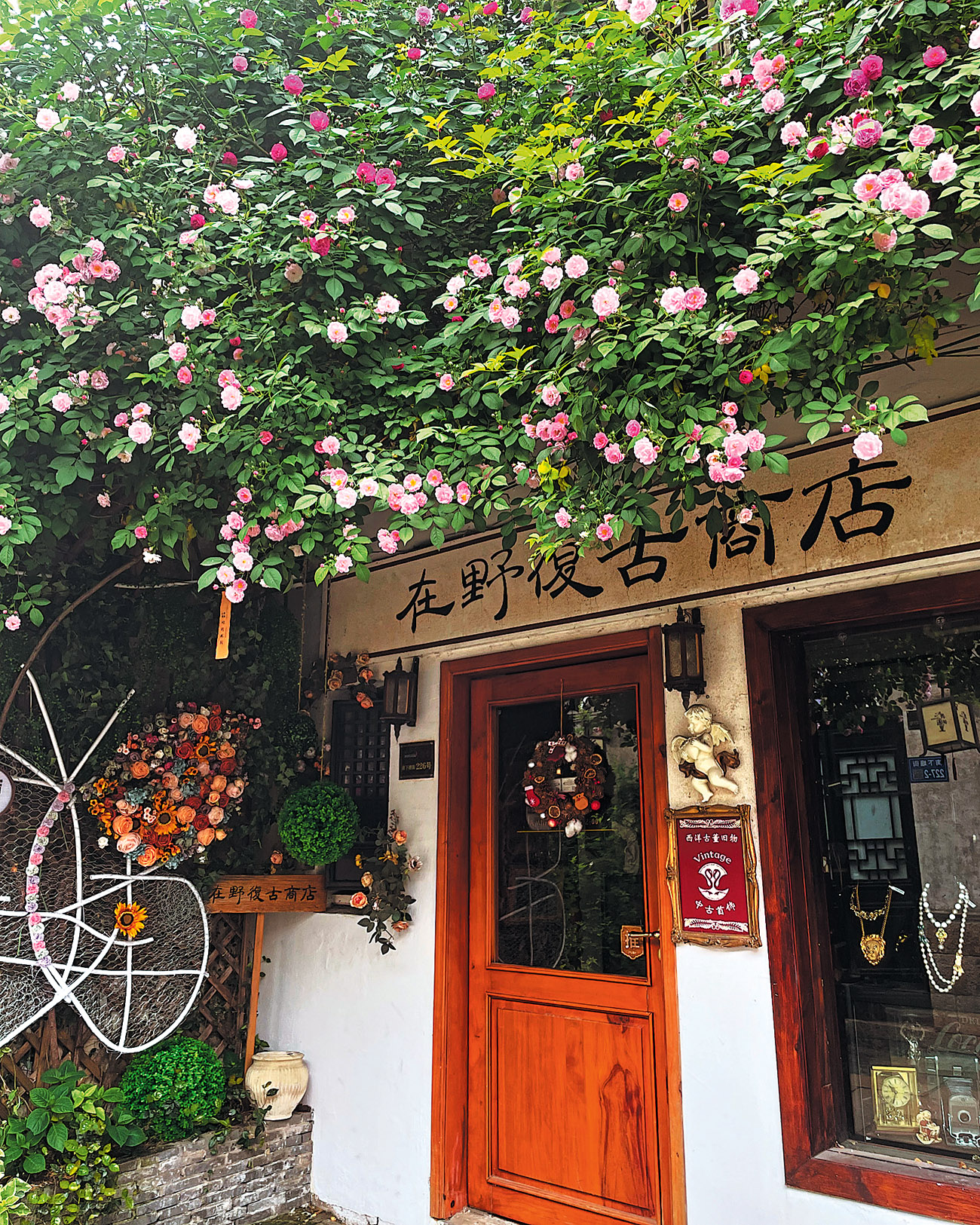
Wuxi’s ancient canal dates back over 3,200 years and became part of the Beijing-Hangzhou Grand Canal during the Sui and Tang dynasties (581-907), according to Yang Jianmin, secretary-general of the Wuxi Cultural Heritage Conservation Foundation.
“In the early days, the canal was mainly for irrigation and military purposes. Later, it became a famous rice market dock and a center for grain distribution. By the late Qing Dynasty, it had become a major hub for industrial and commercial development,” Yang said.
The Grand Canal was successfully inscribed as a UNESCO World Heritage Site in 2014. Turning the ancient waterway into a global tourist destination became Wuxi’s next goal.
Yang said Wuxi’s residents have a strong emotional connection to the canal because it is an integral part of the city’s history. In terms of preservation, both citizens and the government have taken proactive steps. The canal has been designated as a protected area, he added.
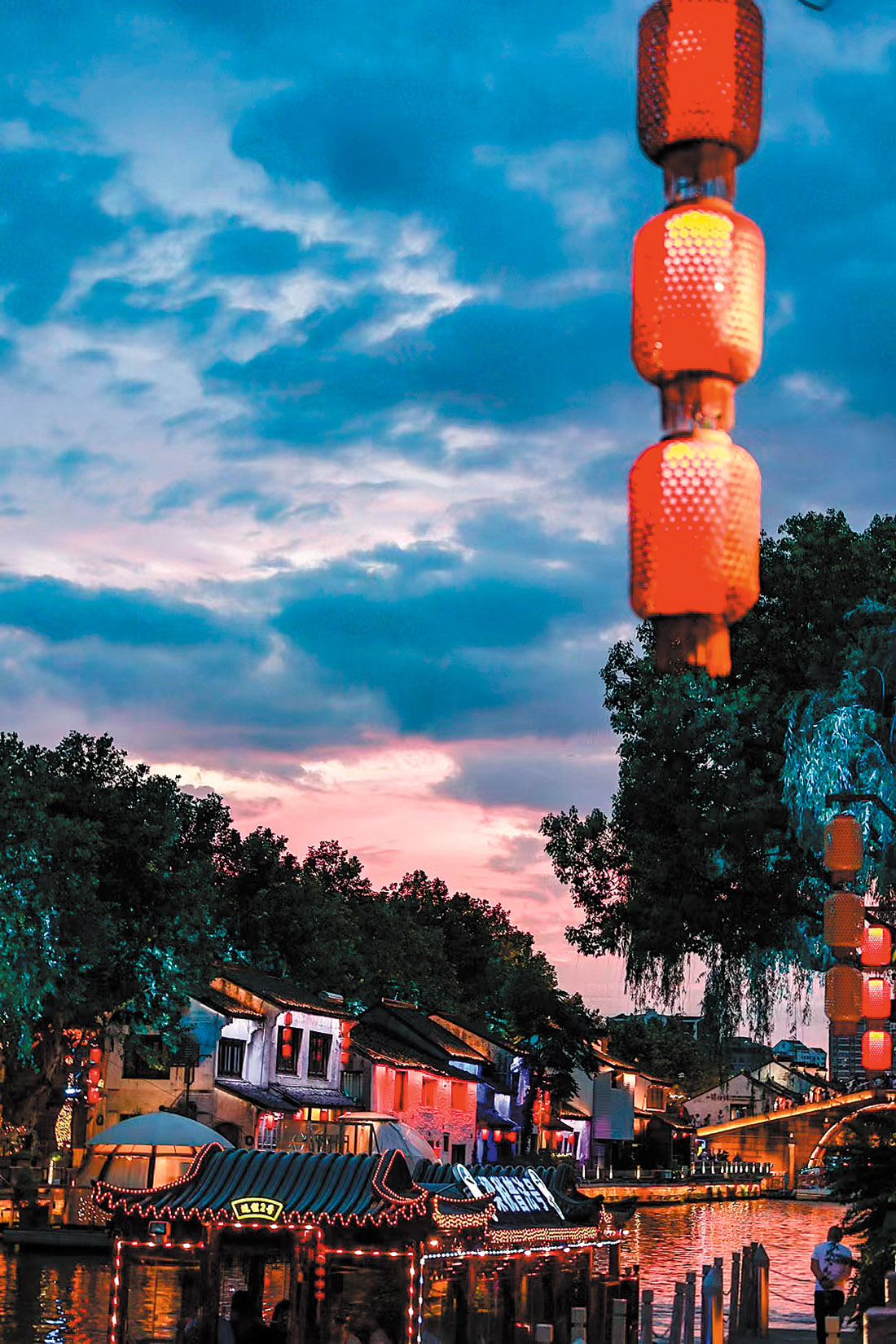
Over the years, the district has preserved and renovated relics and architecture. By adding functional elements that meet both preservation requirements and development needs, it has brought life back to these heritage sites and spurred development in the surrounding areas. The water quality of the canal has significantly improved, thanks to government efforts, and authorities continue to monitor it.
Wuxi boasts a wealth of intangible cultural heritage, such as Huishan clay figurines and Wuxi embroidery.
Entrepreneur Zhu Dachun’s residence stands out as the best-preserved Qing Dynasty celebrity home along the canal in the Qingmingqiao area. Yang said he hopes to see the emergence of more distinctive venues, like unique restaurants and cozy guest-houses.
“This way, visitors to Wuxi can not only enjoy boat rides along the ancient Grand Canal but also sit back, relax and appreciate its beauty,” he added.


